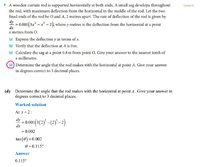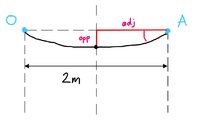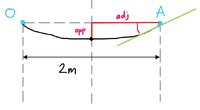Please refer to attachment A - at first, I had no clue how to even attempt (d), but after taking a quick peak at the worked solution, I can see that since you know the values for the opposite and adjacent lines (refer to attachment B), you would be able to use tan because tan is opposite over adjacent (O/A). However, I'm not sure where to go from here with this information - examining the worked solution did not help me either since I don't understand their working, or why they even used the derivative function rather than the y function from (a)...
Thank you!
Thank you!




